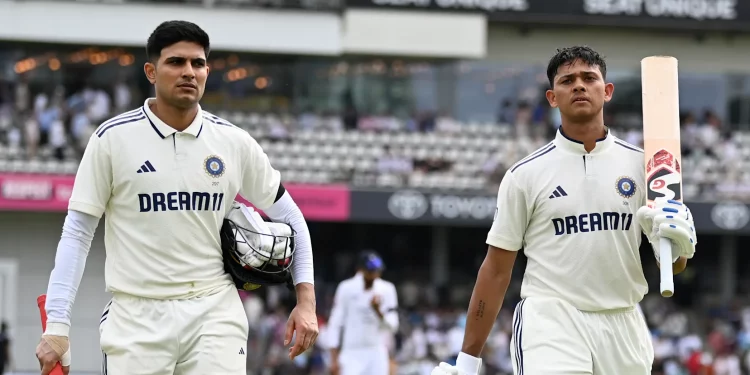Gill had more on his platter, so he went first. Conversations about his ascension had been tainted by his leadership, scrutiny, and batting average. The spotlight was only heightened by the match situation. In 12 frantic minutes before lunch, India lost two wickets for one run following a 91-run opening partnership between Jaiswal and KL Rahul.
When questioned about his Test team’s style of play, Shubman Gill grinned. He stated, “You’ll know in August,” during his maiden news conference prior to a game as the captain of The Indian Test team. However, he avoided any mystery when questioned about his batting objectives. “Whenever I’m going out there, I want to dominate the opposition and be the best batsman in the series.”
There was no glimpse of Gill the skipper on the opening day of the five-match Test series. However, Gill, the batter, who was composed, self-assured, and subtly merciless, made sure that his first day in charge finished with a powerful declaration: an undefeated 127, his most comprehensive knock away from home since that 91 at the Gabba.
Indeed, two initial impressions influenced the first day at Headingley. At number four, one from the new skipper. The century of Yashasvi Jaiswal has its own beat and message. A day passed between their innings, one of audacious arrival rather than subdued change.
The other came from a rookie opener who was playing in England for the first time in Test cricket.
Then, following the interval, the first glimpse of India’s new No. 4 was seen making deliberate moves to the crease: a white compression top underneath a jersey with a cream tint, black socks underneath his pads, and a bat with an MRF sticker and a red grip that pierced the early afternoon hum with subdued authority.
The Western Terrace was in full shout, as it always was. England came hard, buoyed by their pre-lunch surge and some air movement. In one of his writings, Steve Waugh described how, in India, Tendulkar would be in before you could collect your thoughts when the second wicket fell. The rhythm felt uncannily familiar, even if the noise was local and the No. 4 was fresh.
Jaiswal was on 42 when Gill left. Jaiswal reached 53 minutes into the session, while Gill was already at 40. The pace quickened. The tension subsided. The innings ended.
The ancient bugbear, the inswinger, had been tried by England. However, Gill had precise bat action and good footwork. He met the ball under his eyes and advanced in defence with delicate hands and a still head, starting just outside the crease. There was no strain when he drove; it was all timing. With a cover drive lovely enough to remember his predecessor at No. 4, he scored his century, which was only the fifth by an Indian in his Test leadership debut.
Jaiswal, on the other hand, was busy creating yet another memorable first impression as he made his own sort of debut in a foreign nation. He has struck a century in his debut Test match in England, Australia, and the West Indies, three of the four nations he has now visited. He should be included in any early list of the ‘Fab Four’ of the next age because of his flexibility.
With a brutality that verged on absurdity, he punished width: 90 of his 101 runs went through the off side. He started off strong and changed gears as necessary. However, it wasn’t without difficulties. England cramped up his side-on posture by using a leg-side-heavy field to target his ribs. He suffered from right forearm pains. But he persevered. and ultimately scored his fifth Test century in his twentieth game.
Indeed, England’s assault appeared rusty and feeble. After a lengthy hiatus from red-ball cricket, their quick bowlers appeared to be lacking in overs. The pitch was generally benign, and the discipline faltered. However, the Dukes ball moved, at least in the air, and this was still a Test match in England.
Nevertheless, on 359 for 3, India walked off at stumps. However, the narrative went beyond the runs and the hundreds. The two who created them were the focus.
Two years apart, two guys recently topped the Indian Under-19 World Cup run rankings. Two players, both fresh off successful IPL campaigns that ended just three weeks ago, were influenced by the contemporary T20 era. Two guys are now anticipated to lead the Indian Test batting tradition and be featured prominently in team photos for the ensuing ten years.
They made their initial impression in a sun-drenched Headingley Stadium and gave it the weight of something intended to stay, even though it’s only the first day and there will undoubtedly be more difficult tests ahead.







